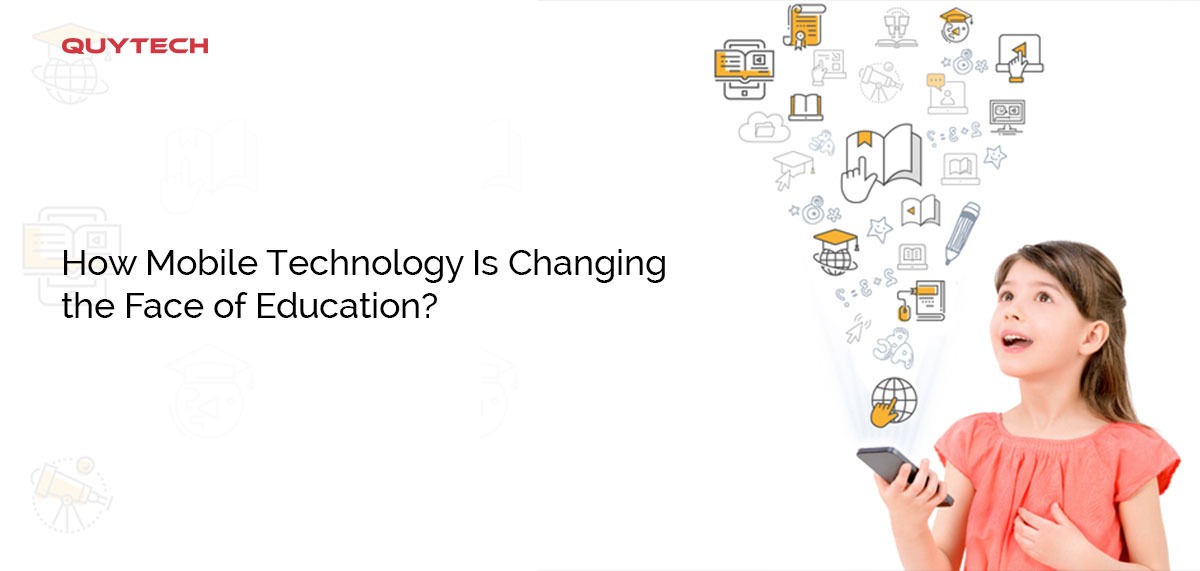The proliferation of mobile technology has impacted every industry and education is no exception. Whether it is K-12 or higher education, the mobile revolution is now changing education fundamentally more than it has ever changed before.
Mobile learning is the new face of education. The Mobile Learning Market size is estimated at USD 60.97 billion by the end of 2023 and is expected to reach USD 184.42 billion by 2028, growing at a CAGR of 24.78% during the forecast period (2023-2028).
Another study revealed that 80% of students in Grades 9 to 12, 65% of students in Grades 6 to 8, and 45% of students in Grades 3 to 5 use smartphones and are connected to their schools around the clock.
Also, classrooms across the U.S. are planning to incorporate Bring Your Own Device (BYOD) solutions to expedite the use of technological learning tools.
These statistics show that mobile technology has a bright future in the education sphere as it also does in healthcare, transportation and other industries.
But, why is there an upsurge of such technology in the education sector? How is it transforming the learning and teaching process? Read on to learn more.
01- Enables Students to Learn Anywhere and Anytime
With mobile devices, students are no longer restricted to their classrooms for learning. They can work on an assignment, while they are at home, in between classes or while waiting on the bus.
This also benefits students who are located in remote places, as they can use learning management platforms and use digital education with ease from their mobile devices.
In this way, mobile technology is allowing students to learn anywhere and anytime, in addition to learning in the classroom.
Read More: How Virtual Classrooms Are Enabling Education in These Trying Situations?
02- Makes Classrooms More Collaborative
Mobile technology has also made collaboration between students and teachers much easier than before. Now, both parties can communicate and collaborate in and outside the classroom quickly and effectively.
Also, with the help of the cloud and mobile technology, students can share documents when working on team assignments, use video conferencing, and participate in discussion forums. Using such tools makes their learning process more compact and successful.
03- Students Get Instant Feedback
Before digitization shook the education world, students had to wait for the tutors to grade their exams and assignments.
But, not anymore; now students can get feedback instantly.
This is beneficial for them as they can apply the lessons learned from the feedback promptly. And, research tells us that student performance increases significantly when feedback is given instantly.
04- Makes Learning Interactive

Mobile technology has also made the learning process more engaging and interactive than the traditional method, where concepts were conveyed in a theoretical matter with textbooks.
New technologies, such as animated learning through apps and augmented reality, are transforming the way education is becoming personalized.
Such technologies also empower two-way interactions in which the educators can walk the students through problem-solving and exhibit new concepts by using mobile devices.
For example, with augmented reality, mobile technology helps students recreate historic events or walk through geographical sites, enabling an immersive way of learning.
05- Makes Learning Fun
The traditional learning process is not effective anymore and mobile gaming apps, such as number riddles, word puzzles, and math games, have come as great alternative solutions to bring fun to learning.
So, today’s students do not learn and play separately; they learn while they play.
06- Changes in the Roles of Students and Teachers
With the evolution of mobile technology, the roles of students and teachers have changed. Students are now more engaged and active in the learning process and educators no longer simply deliver information, while students take it in. Also, tutors have become facilitators and are no longer just dispensers of information.
These are just a few examples and the list goes on and is expected to continue to grow in the coming years. And, it is evident that mobile technology has developed from a nice-to-have tool to a must-have tool for education.
So, do you have any other examples of mobile technology in the education industry to share? Have we missed any points?
Please feel free to leave your comments below, as we would love to hear from you.
